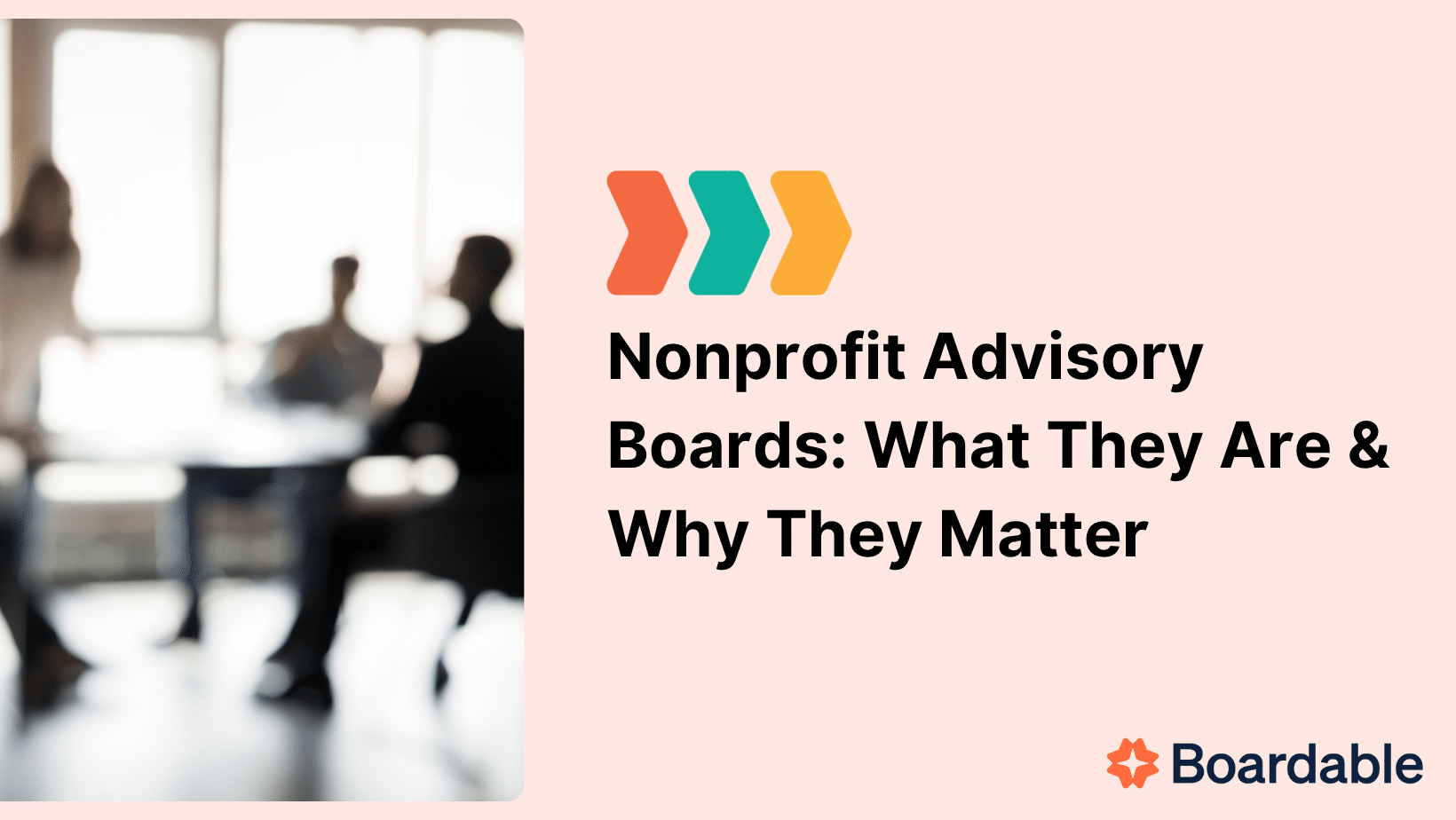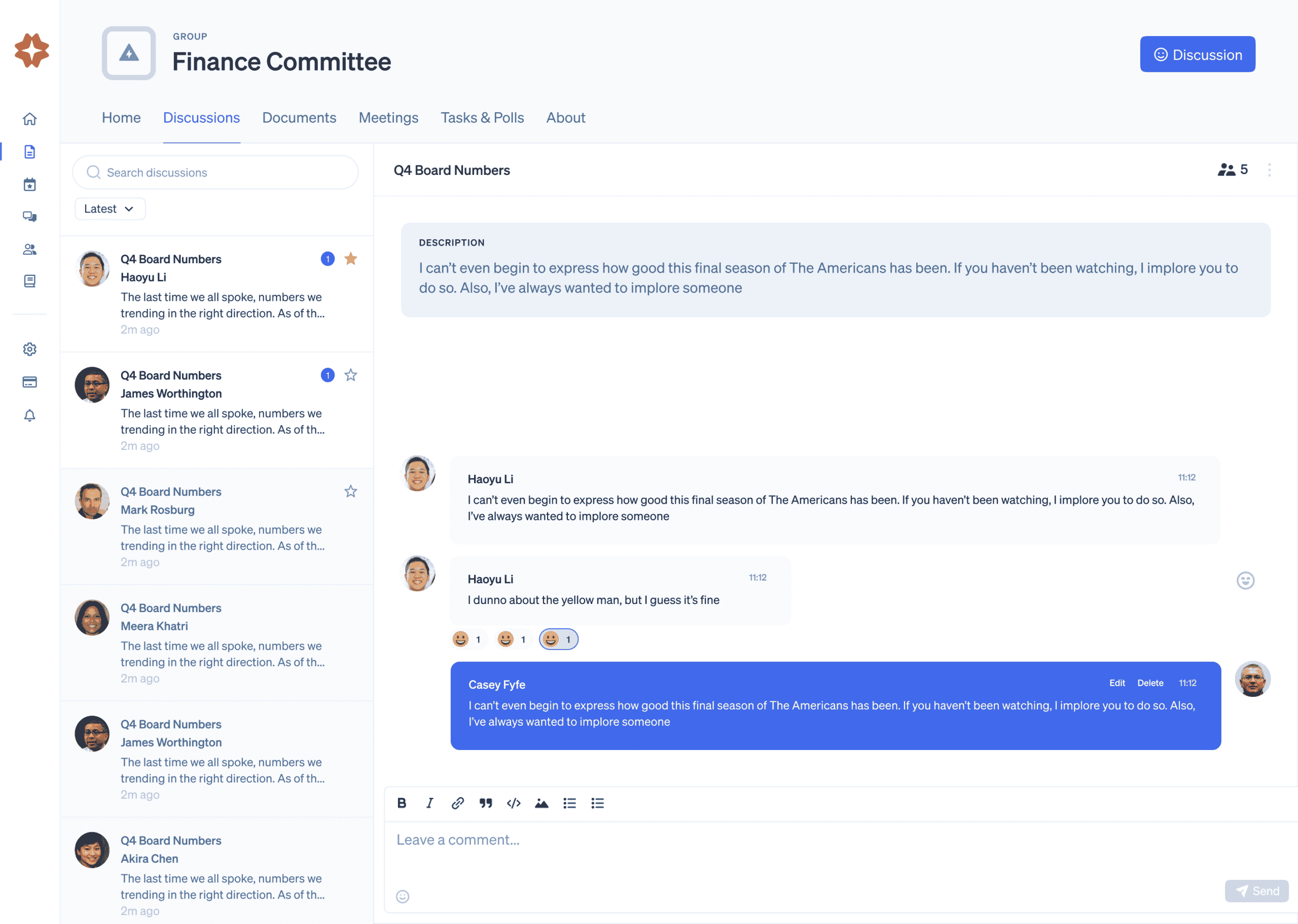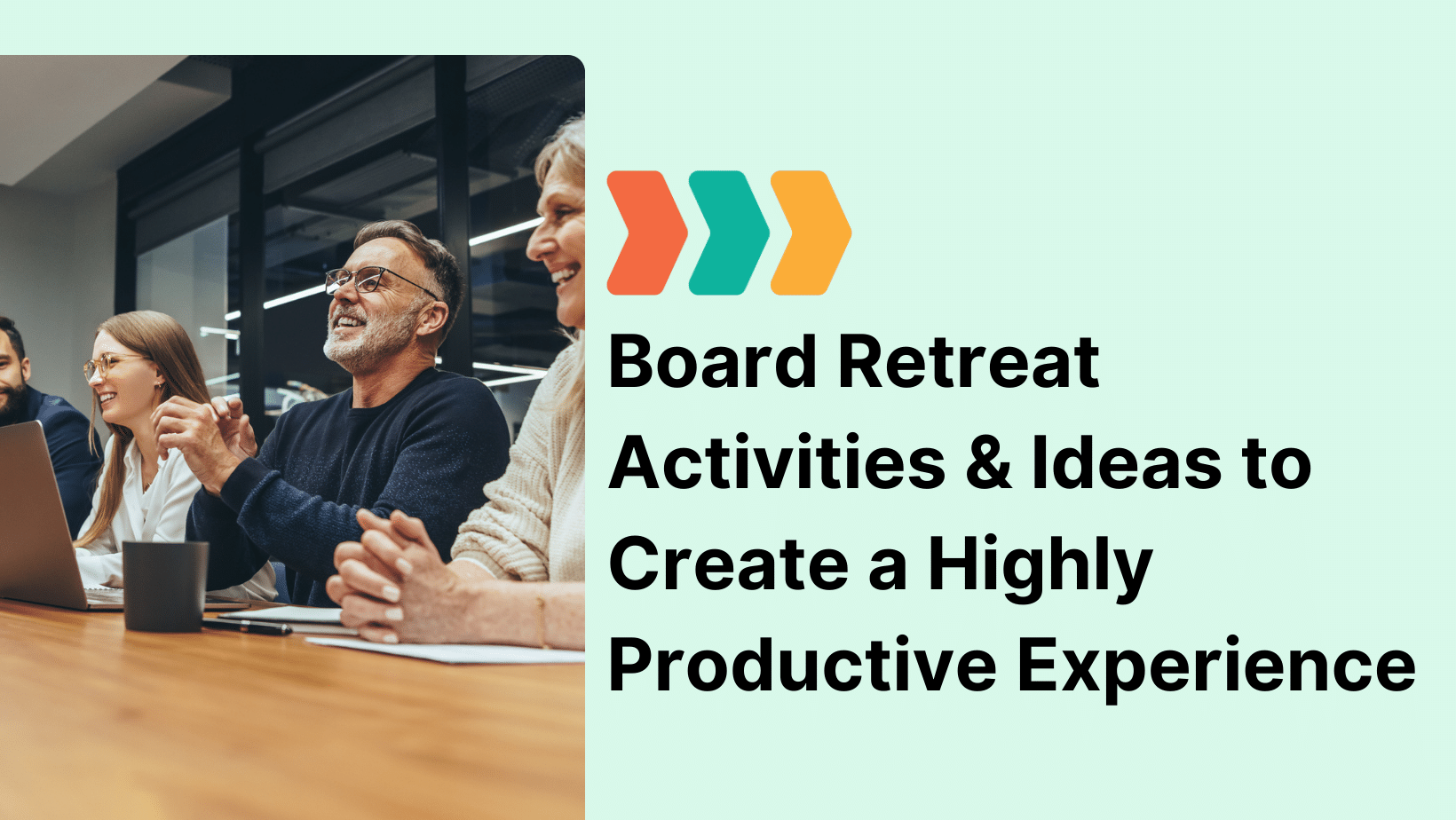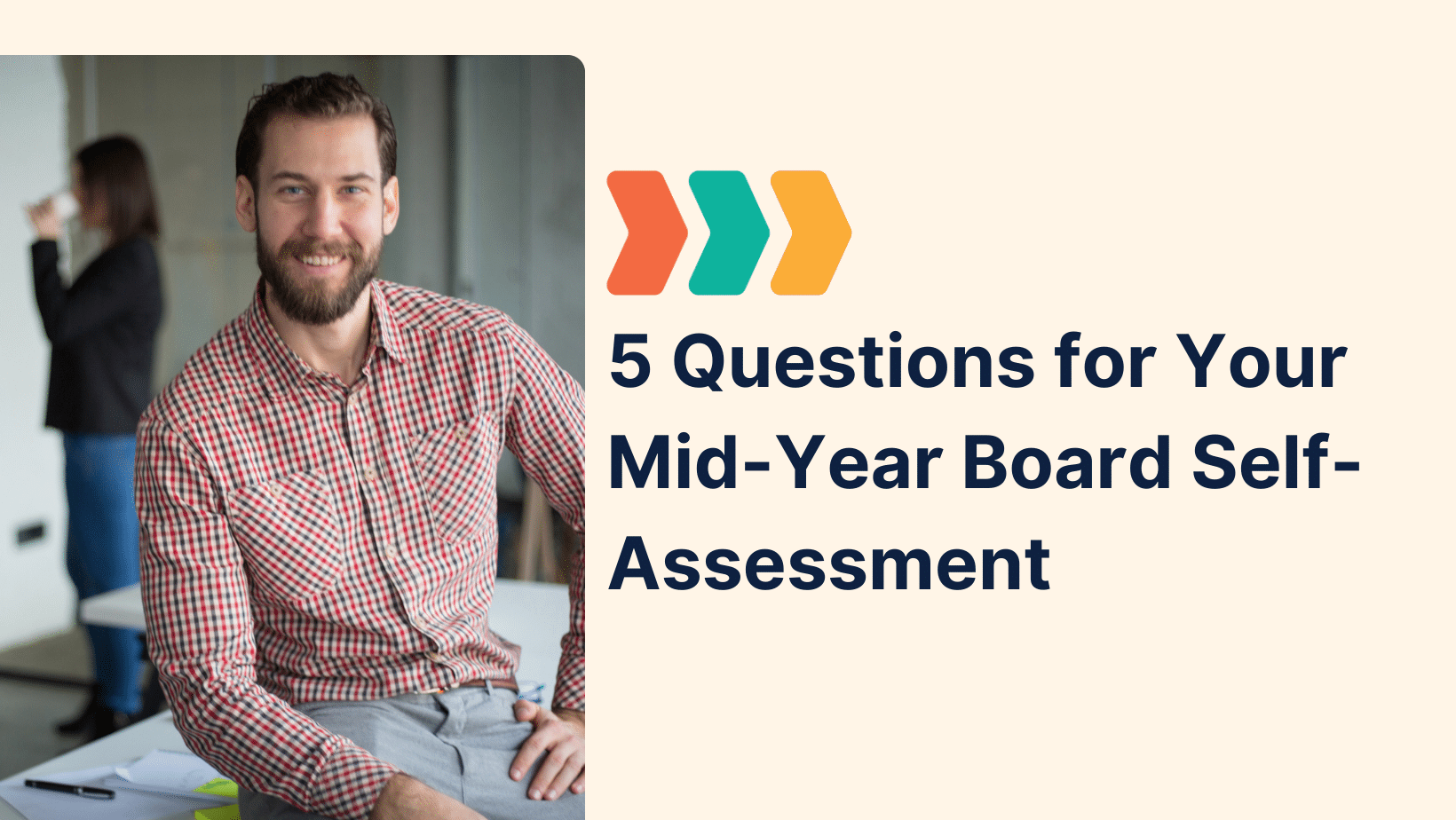A nonprofit advisory board brings targeted expertise, fresh networks, and extra hands to the causes you champion without adding governance complexity. When aligned with your board of directors, an advisory board can shorten learning curves, unlock new donor segments, and spark innovative programs.
Feel free to skip to the area you find most helpful, or read the whole article for a complete overview:
- Advisory Board Vs. Board of Directors
- The Types of Nonprofit Advisory Boards
- The Core Responsibilities of an Advisory Board
- Nonprofit Advisory Boards: FAQs
- Best Practices for Nonprofit Advisory Boards
- Conclusion
Advisory Board vs. Board of Directors
Imagine attending a nonprofit fundraiser for a cause that’s meaningful to you, perhaps building an animal shelter or starting an after-school program. Flipping through the program, you see everyone who made the event possible, including the sponsors, board of directors, and the advisory board.
What’s the difference between the last two? It’s a fair question. After all, nearly every nonprofit has (or is in the process of developing) a board of directors. But not every nonprofit has an advisory board.
To understand the differences between each board, let’s start with what they have in common. Both exist for the same reason: helping the company or organization succeed. They both also provide perspectives from the community and represent the organization in the community. The main difference is the legal responsibilities of each and how they help the nonprofit.
What Makes an Advisory Board Unique?
Whereas a board of directors focuses on governance, an advisory board contributes—you guessed it—advice and insight.
An advisory board has no governing power or fiduciary responsibility. They simply offer opinions. That thought leadership, however, can have a powerful impact on a nonprofit’s perception. Often, advisory boards focus on specific areas of nonprofit needs or ambassadorship. Advisory members shape your outreach strategy by:
- Representing an audience that the nonprofit seeks stronger connection to.
- Making that connection happen through networking and planning events.
- Reporting directly to leadership, not the board of directors.
- Promoting their nonprofit in the community.
- Offering recommendations to leadership in specific subject matters
What is a board of directors?
A board of directors’ chief responsibility is governance. This encompasses everything from fiduciary strength, fundraising, asset management, supporting the executive, and so on.
Another way to understand this: Focus on the word directors. Board members create directional guidance to help a nonprofit live up to its mission. They do this through:
- Setting policies on issues such as gift acceptance.
- Developing strategy, from staffing plans to assessment.
- Giving to their nonprofit organization.
- Promoting their nonprofit in the community.
What’s the difference between an advisory board and a board of directors?
At first glance, some responsibilities of a board of directors and an advisory board appear to overlap. For example, all board members serve as ambassadors for their nonprofit. Each board member may also be charged with organizing events and giving to the organization.
These responsibilities, however, can play out in vastly different ways for each board.
Consider that if a board of directors is largely filled by baby boomers long established in their professions, then members will likely engage with the community in a formal way. Those methods might include attending galas, exploring partnerships, and facilitating donor relations.
An advisory board, on the other hand, would target a different audience, and likely in a more informal way. For example, a symphony might create an advisory board to better connect with Millennials. That group might be more responsive to a shuffleboard tournament at a local brewery than, say, a $200-a-plate dinner.
When properly utilized, a board of directors and advisory board can significantly enhance a nonprofit’s visibility, even if the boards have little to no contact with one another.
When properly utilized, a board of directors and advisory board can significantly enhance a nonprofit’s visibility, even if the boards have little to no contact with one another. The advisory board expands the reach of the board of directors, which in turn provides more options for the directors. Often, advisory board members become future board members or the most ardent volunteers and donors of a nonprofit.
The Types of Nonprofit Advisory Boards
At their core, all advisory boards have a single goal: to help the nonprofit organization. However, there are different types of nonprofit advisory boards. This characteristic will influence their specific responsibilities. You can think of an advisory board as being dedicated to any topic the board needs help with or wants a new perspective.
Some nonprofit advisory boards can be temporary while others need to be permanent. The scope and specifics of the advisory board should be clearly illustrated in bylaws and the advisory board’s charter.
Governance
Perhaps one of the most common nonprofit advisory boards, a governance board usually advises the main board through typical nonprofit governance issues. These might include board member recruitment and onboarding, periodic assessments of the board, and audits of bylaws.
Fundraising
These boards help the nonprofit organization raise funds, by creating plans and projects, and by running these projects for the nonprofit. Not every nonprofit organization has the time or the resources to continuously fundraise on their own. This board could also be split into committees for specific fundraising campaigns.
Young Professionals
The purpose of a young professionals board is to groom future board members and stakeholders of an organization. This is also an excellent way to introduce people to the nonprofit. Often, the young professionals board has an energy and creativity that inspires everyone in the nonprofit’s leadership!
Letterhead
This advisory council is essentially symbolic. They show that advisors affiliate with the nonprofit organization, but decisions are up to the main board. An example of a letterhead advisory board might be well-respected medical professionals who lend gravitas to a healthcare nonprofit.
Programmatic
These boards are going to focus primarily on running specific programs within the organization, sometimes programs the organization might not otherwise have time or energy for. Sometimes individuals who are considering starting their own nonprofit may discover an established nonprofit that could provide the service they have in mind through an umbrella programmatic advisory board.
These are common nonprofit advisory boards, but anything specific to your nonprofit’s needs if fair game. Make this resource work for you! As long as you outline the responsibilities and expectations for the board, their purview can be anything that is helpful to the main board of directors.
Pro tip: Use Boardable Groups to give each advisory team a dedicated workspace for files, chat, tasks and goals in one place.
The Core Responsibilities of a Nonprofit Advisory Board
A nonprofit advisory board is responsible for performing tasks outside of the usual purview of the nonprofit board itself. Advisory boards are formed to give the nonprofit organization specialized information, experience, and skills, so that the organization is able to achieve things that it otherwise could not.
Advisory boards form out of a volunteer crew, and a single nonprofit organization may have many advisory boards. Not only are advisory boards able to help the organization leverage resources that it couldn’t otherwise, but it’s an excellent way to reach out to the community.
The nonprofit advisory board is not like the board of directors. They can only assist the nonprofit organization, rather than making plans for the organization. The responsibilities of an advisory board are purely as a support position.
An advisory board is a supplement to this main board. It may have an actual board member or two on it, but it is mostly composed of people with expertise in a given area who are not on the main board. If the word “board” in the title is confusing, you can think of this as a “committee” instead. Their role is to give recommendations to the main board on specific areas.
Nonprofits generally form an advisory board with a specific purpose. This should be the first step. In addition to identifying the purpose, advisory boards should also:
- Nominate a leader for the advisory board.
- Meet with a regular frequency.
- Set performance expectations and goals.
- Have guidelines for membership and procedures for removal.
All of these things together will form a reliably managed and governed advisory board. The board will be managed much like the nonprofit organization’s own board, with different people filling different roles.
Best Practices for Nonprofit Advisory Boards
Remember, if the “board” in advisory board is confusing, you can think of them as a committee. Committees can be standing or ad hoc task forces, but they are governed by best practices that make sure everyone knows what is expected.
By spelling out the guidelines for your advisory board or committee, you guard against burnout, produce better results, and recruit top talent.
Have a charter for the advisory board.
Like any committee, your advisory board should have its own charter. This should spell out how members are added, what their term limits are, how they will report to the board, the meeting frequency and expectations, goals, and so on. we will go into more details on each below. Make sure the charter is easily accessible for existing and new members.
Set term limits and establish recruitment procedures
Decide if you want to have term limits for the advisory board and be sure to spell this out in the charter. Unlike the main board, it may be advantageous to allow people to volunteer for the advisory board as long as they have interest. This can be a benefit for the nonprofit.
For example, if the organization has an emeritus board member advisory board to counsel leadership, it would be counterproductive to kick those members off after two years. Whatever term limits (or lack of) make sense for your advisory board, just be sure everyone knows the protocol upfront. The same applies for recruitment. While you want a balance of variety on the main board of directors, an advisory may want individuals with specific expertise in common.
As long as the needed expertise is spelled out in the charter, the advisory board can be as focused as necessary. Be sure to protect your advisory board with provisions in the charter for diversity and inclusion.
Assess the advisory board’s performance
Before you ever start an advisory board in the first place, there should be a clear reason for its existence. Whatever the goal of the board, the measurable aspects of the goal should be in the charter and communicated to members when they join.
As part of goal tracking, advisory boards need periodic assessments, just like the board of directors. This could be as simple as a five-minute check-in with members at the end of a monthly meeting, or a more in-depth evaluation from time to time. You can read more about board evaluations in our comprehensive article.
Provide communication tools for the advisory board
For an advisory board to be successful, they should have the necessary tools to communicate both internally and with other boards. A bullet-point summary of their activities should be included in the reports and the meeting agendas provided to the governing board.
Boardable’s Groups feature allows organizations to easily divide their team into advisory boards, committees, staff, and a governing board, providing documents and information to only the pertinent people. Task tracking and goal updates make sure everyone stays on track between meetings, too.
Conclusion
The bottom line is, if your nonprofit isn’t taking full advantage of the energy and expertise that advisory boards can bring to the organization, you’re leaving potential on the table. In addition to your stellar board of directors, why not leverage a whole NEW group of dynamic and devoted supporters? By using the guidelines in this article, you can jumpstart your leadership’s productivity with all the boards you need. Good luck!
Watch how nonprofits can spin up advisory groups in minutes—agendas, documents, e-signatures, and AI-powered minutes included. Request a live demo!
Nonprofit Advisory Boards: Frequently Asked Questions
Do we need to create an advisory board?
Is there a need for a group of advisors? What would you like them to advise your nonprofit about? In what ways would this group complement your governing board without confusion about who governs the nonprofit? Should you call it an advisory board, or would it be better to invite people to serve on a committee or task force?
If you have some specific purpose in mind for the advisory board, it’s a good first step. Whatever you choose to call the group, be very sure about its purpose. If you can’t narrow down what they would advise you about, you should put the idea on hold. Having an advisory board just to say you have one is a recipe for confusion and burnout.
Who serves on an advisory board?
If you have a specific purpose in mind, the next question is who you might ask to serve:
-
- Are there influential community members who would be able to give valuable advice about your specific purpose for the group?
-
- Do we have retired board members who have valuable history with the organization and can provide perspective to the discussions?
-
- Can we find subject matter experts who understand the bigger picture in your field and can give context to your plans?
Once you have answered these questions, you can plan your advisory board structure. Each advisory board or committee should have bylaws and clearly defined roles before you start inviting people to join.
Can we have more than one advisory board?
Absolutely. Many organizations maintain separate advisory groups for fundraising, programming, and DEI—just ensure clarity in each charter.
Can we specify in what areas we want advice from the advisory board?
If an advisory board knows that they can make recommendations that are taken seriously and discussed by the governing board, good things can happen. When a group is not clear about their role for the organization, misunderstandings about their authority to mandate change or action can make everyone uncomfortable.
A specific job description will be helpful in defining roles. Be sure to spell out who and how and when the recommendations will be sent to the governing board. There should be measurable goals for the specific area of focus so that everyone feels like they are working toward the same finish line.
When does an advisory board disband?
Some nonprofit advisory boards are essentially fixtures. They will remain with the nonprofit organization for the long term, helping the organization manage specific fundraisers or tasks.
Other nonprofit advisory boards are going to be temporary. They will be formed at the beginning of a project and then dissolved by the end of the project. When and how the advisory board disbands should be decided when the advisory board is created.
Think carefully about these questions before assembling a group to advise your organization. If you form your advisory boards well, you have a powerful mechanism for training future board members, retaining excellent past members, and tapping the expertise in your community.




